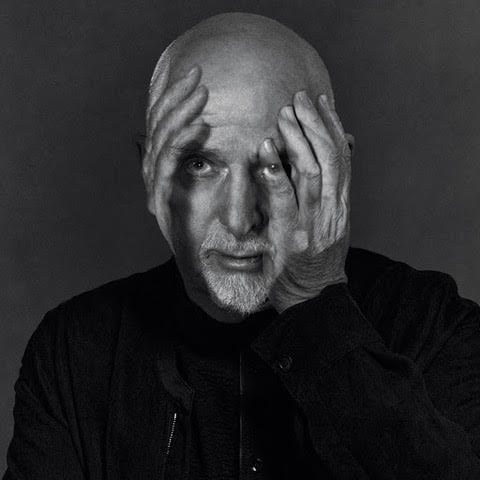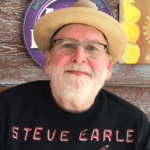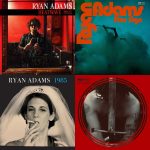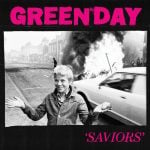 Peter Gabriel
Peter Gabriel
i/o
Real World Records [2023]


It’s been 21 years since English pop singer/songwriter Peter Gabriel released a new album of original material, as his 2010 release Scratch My Back was a cover album of songs by favored artists sung only with an orchestral backing, while 2011’s “New Blood” went back so his own material with the same approach. Still, with two decades since bring new work to the world, Gabriel released the twelve tracks of his new work one at a time, sharing them on each month’s full moon, track one – “Panopticon,” on back on January 6, and offering the final track, twelve – “Live and Let Live,” here at the end of the year on November 27, and the full combined collection a week later. And if that’s not quite enough, Gabriel is releasing the full album in two completely separate mixes together, the “Bright-Side Mix” shaped by Mark “Spike” Stent (who’s worked with the likes of Beyonce, Ed Sheeran, Lady Gaga, and Madonna), and a “Dark-Side Mix” by Tchad Blake (who’s worked with T Bone Burnett, Los Lobos, Sheryl Crow, and Black Keys). And unsurprisingly, there’s a third mix available for those who can access Dolby Atmos, an “In-side Mix” by Hans-Martin Buff.
While we’ve had some of these tracks individually for close to a year, it’s quite another thing to sit down and listen to all twelve songs, one leading into the other, hearing the instrumental and lyrical interplay between any number of the selections. Individually, there were some very impressive moments, especially “Road to Joy,” the disc’s obvious banger, but also the impressive melodic songs like “The Court,” “Olive Tree,” and the catchier summations like “Love Can Heal,” “This Is Home” and the closer, “Live and Let Live,” where the disc’s major themes coalesce. And if the music itself was not enough to hold your attention and stir your imagination, Gabriel invited twelve visual artists to take one of his songs and create a work that would accompany the song’s release, whether it be a painting, photograph or sculptor, turning to visual artists like Ai Weiwei, Annette Messager, Olafur Eliason, Tim Shaw, Barthelemy Toguo and others.
Of course, most of the songs deal with the significant levels of connection that weave through our lives, the i/o standing for “input/output,” as we interact with the natural world, the people and the things that impact our experiences of life and shape our sense of self. Then, there is the obvious passage of time, our mortality, and the grief of loss as we encounter the injustices and struggles of so many in this world, and our fragile planet as the climate responds to all we’ve put it through.
The album opens with the bold, bright percolating rhythm of “Panopticom,” which imagines a world where ordinary people are able to monitor that activity of the powerful, so that we can’t be led astray by falsehoods and misinformation and can hold them accountable, a true reversal of fortunes from the current way we often get information about our leaders long after they’ve pulled to wool over our eyes. The album concludes with “Live and Let Live” about an hour and change later, a prayer that we learn the lesson that “an eye for an eye” leaves “the whole world (is) blind.” It’s a call to “lay the weapons down,” and follow as “William Blake wakes his sting, drawing out Martin Luther King, Tutu and Madiba saying rainbows still exist.” It’s a hopeful vision that acknowledges, “It takes courage/To learn to forgive/To be brave enough to listen/To live and let live,” but we’ll destroy ourselves if we can’t turn that corner.
Musically, Gabriel seems drawn to the piano often as a composer, but the album is lush with orchestration by John Metcalfe and the New Blood Orchestra, collaborator Brian Eno, Gabriel’s long-time killer band (guitarist David Rhodes, bassist Tony Levin, and drummer Manu Katche), two very different choral groups, the Soweto Gospel Choir and Orphei Drangar, a Sweedish all-male group, adding rich harmonies. Of course the kinetic energy of the bolder pop tracks connects, but the rich quieter moments provide where a cello or violin echo the melody as it’s sung are equally moving. And then there’s Gabriel’s unique singing voice, still strong and with a subtle emotional presence that he’s carried with him from back in Genesis singing “I Know What I Like in Your Wardrobe,” and “The Lamb Lies Down on Broadway,” or his iconic 80’s breakout hits, “Sledgehammer,” “Red Rain,” and “Don’t Give Up,” his duet with Kate Bush, but especially “In Your Eyes” playing through John Cusack’s boombox.
In the title track, Gabriel sees how each of us are “part of everything,” but in “Four Kinds of Horses,” explores the way a young, innocent mind can be twisted and turned through indoctrination to see terrorism as a reasonable path. “Road to Joy” celebrates the way we can experience all of life through our diverse senses, while the more mournful “So Much” recognizes that while there’s so much going on in the world, so many ways to engage and connect, we have a limited amount of time, and “there’s only so much that can be done.” “Olive Tree” returns to the theme of technology creating life giving connections, while the “Love Can Heal” offers a hopeful vision that no matter how messy and broken our lives may feel from time to time, restoration and renewal are possible. While “This Is Home” drips with warmth toward one’s environs, where “love keeps through,” and “I am holding you/There’s nowhere else I’m going,” “And Still,” written for his mother after her passing, recalls all the ways those familiar things in our lives bring back the memories of those who’s lives have deeply touched ours. Here, and several other places the cello of Linnea Olsson really creates a world of its own.
Gabriel’s musical choices echo his early work creating progressive rock as part of Genesis, but aims toward a more complete and focused melodic and rhythmic impact even as his songs expand beyond the traditional 3 or 4 minute pop song. The album, taken as a whole, creates a durable artistic dialogue, building on those tensions that bring us together into community in joyful celebration, and those forces that find us going into our separate corners preparing for conflict, the energies that suggest we can bring about reconciliation and even restore our planet, and the part of us that’s willing to blow up the whole thing. And often the musical statements are gloriously uplifting. Stent’s “Bright Side” mixes are the most accessible, polished and radio ready, yet Blake’s “Dark Side” mixes, while inappropriately named, allow the instruments to stand apart, crisper and less refined.
The album has come to us bit by bits, slowly over the course of the year, but collected all here in one place, twelve songs in a row, taken together, they offer a telling musical statement about this time and place in our world, where we can still dream of grand and glorious solutions to the dilemmas we face as a human race: war, hunger, poverty, and a dying planet; but it’s not yet clear that we’ve evolved enough to make the choices that can lift us and the world as a whole to new levels of cooperation and community. It’s a strong musical statement that invites engagement, and points in the direction of the things we say we long for, hope, peace, love, and joy. It’s a fitting year end gift.
KEY TRACKS
“Road To Joy” / “Olive Tree” / “Panopticom”
ARTISTS WITH SIMILAR FIRE
Genesis / Sting / Talking Heads
PETER GABRIEL LINKS
Official Website | Facebook | Instagram | Twitter | Bandcamp | Real World Records
Brian Quincy Newcomb has found work as rock critic and music journalist since the early 80's, contributing over the years to Billboard Magazine, Paste, The Riverfront Times, and The St. Louis Post-Dispatch. [Brain sadly passed away on April 15, 2024, but his reviews live on as a lasting tribute to his impact on music journalism. We keep him on our minds with every review we post.]





